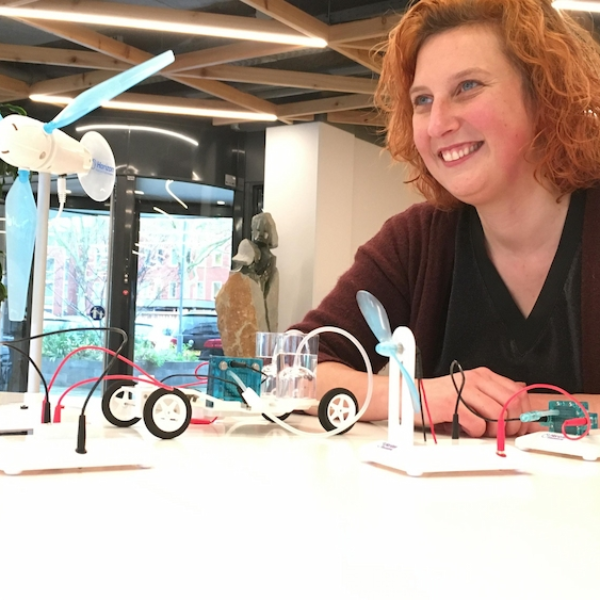Colleague Fenna van de Watering talks about hydrogen on RTV Oost

Colleague Fenna van de Watering talks about hydrogen on RTV Oost
The Province of Overijssel is investigating the potential of hydrogen for domestic and industrial applications, as well as for transport and energy storage. On the initiative of the Overijssel branch of the political party 50PLUS, a majority of the Provincial Council is committed to attracting a substantial amount of money to Overijssel to boost hydrogen technology. But what exactly is hydrogen, and what are we up against? Fenna van de Watering reveals all in the programme 'Thuis in Overijssel' aired on RTV Oost.
Hydrogen has the potential to play a key role in replacing fossil fuels. Researcher and consultant at Witteveen+Bos, Fenna van de Watering, explains what the future might hold if this technology comes to Overijssel. ‘It’s already widely used in the chemical industry, but in the future, we might also be able to use it to heat buildings and power cars,’ says Van de Watering. ‘And the great thing is that no carbon dioxide is released in the process.’
Hydrogen-powered fan
Van de Watering: ‘I’m a chemist, and I like chemical reactions.’ She demonstrates how she can use hydrogen to run a fan and power a car. Watch the video to see exactly how it works:
870 million
In Europe, hundreds of millions of euros have been set aside for hydrogen projects. This money can be used to support various initiatives to exploit and expand hydrogen applications.
According to Fred Kerkhof of the Overijssel branch of 50PLUS, the exact figure comes to €870 million. This money can be used to support various initiatives to exploit and expand hydrogen applications. ‘Hydrogen cars are already on the market, but in Overijssel we don’t yet have a fuelling station,’ says Van de Watering about the situation in Overijssel.
As for whether hydrogen could be the solution to reducing CO2 emissions, Van de Watering remains cautious. ‘I’m glad that the motion is on the table, because it could lead to pilot projects that could help to generate more support. For people to see such a simple system and think: Hey, I can get to grips with the energy transition because I understand this. These are just bubbles, and I can connect these bubbles to something and then I have electricity.’
The Provincial Council will vote on the motion at 2pm on Wednesday.
What is the difference between grey, green and blue hydrogen?
There are three types of hydrogen: grey, blue and green. To produce hydrogen, you need electricity. Where the electricity comes from largely determines the type of hydrogen. Grey hydrogen is the most readily available today, but is mainly generated using electricity from coal-fired power stations or other fossil fuels. Blue hydrogen can consist of both green and grey hydrogen. Fully green hydrogen means that the hydrogen is generated using energy from environmentally friendly, renewable sources such as solar or wind energy. This electricity is then used in the electrolysis process to separate the H (hydrogen) atoms from the water (H2O).
This news item was originally published on the RTV Oost website.